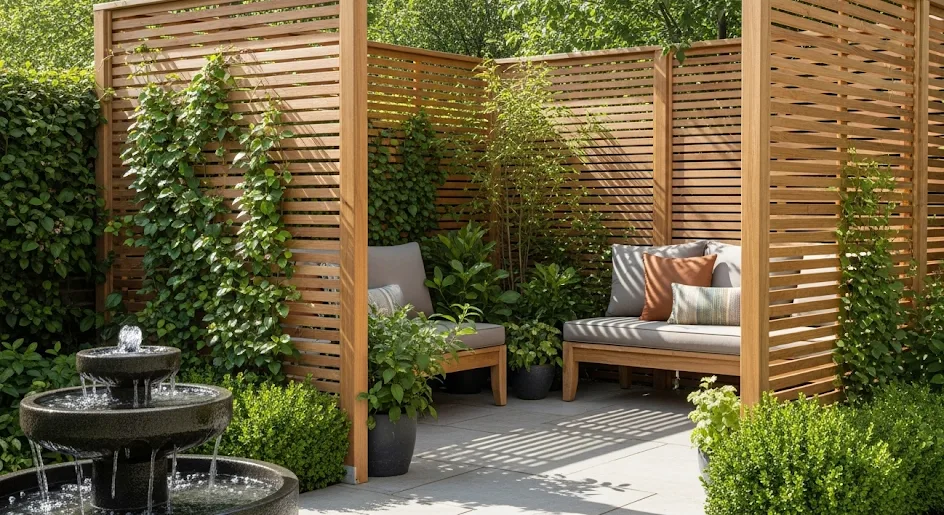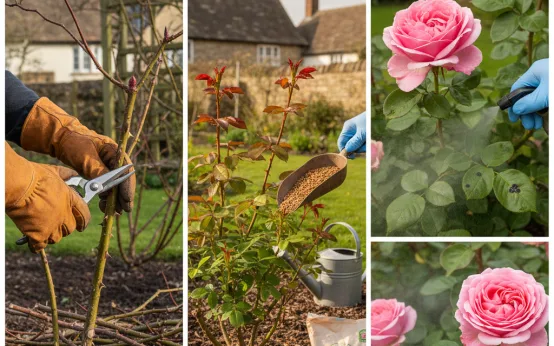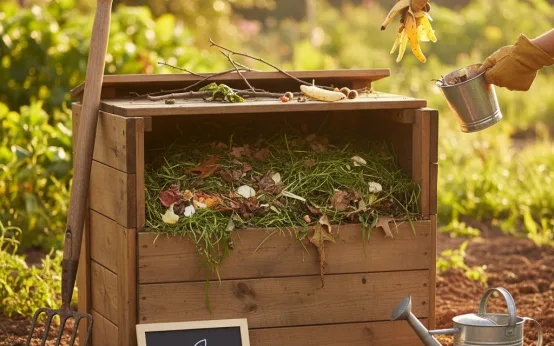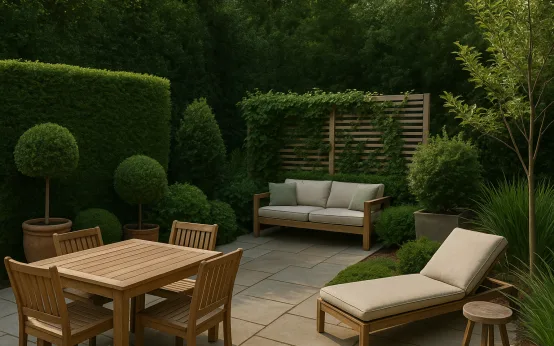
Privacy is one of the most sought-after qualities in modern gardens. Whether you live in a busy city terrace or a suburban neighbourhood, being overlooked by neighbours can make it difficult to fully relax outdoors. Garden screening provides a practical and stylish solution, offering seclusion while also enhancing design. By choosing the right plants, structures, and layouts, you can create a private haven that feels natural, welcoming, and tailored to your lifestyle.
Why Privacy Matters in UK Gardens
Outdoor space is increasingly valued in the UK, especially since many households now see gardens as extensions of living areas. However, enjoying these spaces often depends on a sense of privacy. Screening helps reduce noise, blocks unsightly views, and shields you from curious eyes, making your garden feel more comfortable and secure. Beyond its practical role, good screening also improves aesthetics, adding greenery, texture, or architectural detail that elevates the overall design.
Privacy is not always about complete enclosure. For some, partial screening is enough to soften boundaries while keeping a sense of openness. For others, especially in urban areas, denser coverage creates the sanctuary effect they need. Whatever your situation, there are solutions that balance seclusion with beauty.
Types of Garden Screening
There are many ways to introduce screening, each with unique benefits depending on space, budget, and style. The most effective often combine plants with built structures for both coverage and long-term appeal.
- Hedges: Classic and natural, hedges like laurel, yew, or privet provide year-round greenery and absorb noise.
- Bamboo: Fast-growing and contemporary, bamboo creates dense coverage but needs root barriers to prevent spreading.
- Trellises with climbers: Offer privacy while supporting plants such as clematis, honeysuckle, or ivy for seasonal colour.
- Pergolas: Add vertical structure and can be trained with climbing plants for shade and seclusion.
- Decorative panels or fences: Provide immediate privacy, available in wood, metal, or composite for a modern look.
Choosing the right option depends on how quickly you need results, how much maintenance you can commit to, and the style of your garden. For instant coverage, panels or fences work best, while hedges and climbers provide a softer, more natural finish over time.
Designing Screening for Beauty and Function
Effective screening is about more than just blocking views. It should enhance the design of your garden and suit your lifestyle. Layering is one of the most successful approaches: combining tall shrubs with mid-height perennials and ground cover creates depth, making boundaries feel lush and intentional rather than harsh.
Plants with year-round interest, such as evergreen shrubs or ornamental grasses, ensure that your garden looks attractive even in winter. Seasonal climbers, like roses or wisteria, add bursts of colour and scent in spring and summer. By mixing permanent structure with seasonal highlights, screening becomes dynamic rather than static.
Placement also matters. Screening does not need to run along the entire boundary; sometimes positioning a trellis or hedge in a single key area, such as near a seating spot, provides enough privacy while keeping the rest of the garden open. Breaking up long fences with plants or panels adds rhythm and prevents the space from feeling boxed in.
Lighting can also elevate screened areas. Subtle spotlights on hedges or lanterns hung from pergolas create atmosphere at night, turning private corners into inviting outdoor rooms. This attention to detail ensures screening feels like an integrated part of your design, not an afterthought.
A Private Sanctuary at Home
With the right screening, any garden can become a true retreat. Instead of worrying about neighbours or outside distractions, you can focus on enjoying meals outdoors, hosting friends, or simply relaxing in peace. Screening also boosts property value, as well-designed boundaries are a desirable feature for buyers who want outdoor living without compromise.
Beyond privacy, screening adds ecological benefits. Hedges support birds, insects, and pollinators, while climbers provide nectar and shelter. Choosing living solutions not only improves your experience but also contributes to local biodiversity. Even decorative fences or panels can be paired with container planting to soften edges and bring life into the design.
Ultimately, garden screening is about creating balance. It offers enough seclusion to make you feel comfortable while still connecting you to nature. By combining plants, structures, and thoughtful layout, you can transform overlooked spaces into private sanctuaries filled with character. Whether your style is traditional, contemporary, or somewhere in between, the right screening choice ensures your garden feels like an extension of your home — personal, secure, and beautifully designed.

 Rose Garden Care: Pruning, Fertilizing, and Disease Prevention
Rose Garden Care: Pruning, Fertilizing, and Disease Prevention  How to Start Composting: A Beginner’s Guide
How to Start Composting: A Beginner’s Guide  Creating Outdoor Room Divisions with Plants
Creating Outdoor Room Divisions with Plants